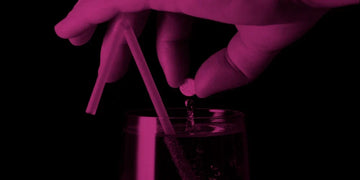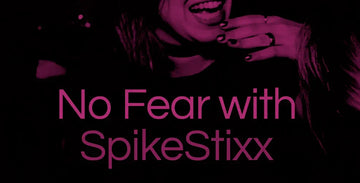Drink spiking happens more often than many realise. Recent reports indicate thousands of cases each year, particularly in places like bars and nightclubs. This article delves into how common is drink spiking, the methods perpetrators use, victim demographics, and self-protection strategies.
Key Takeaways
- Drink spiking is a prevalent crime, with over 6,700 reports made to the police in one year, indicating a significant issue that often goes underreported.
- Young women are the primary victims of drink spiking, comprising 74% of reported cases, highlighting the need for tailored prevention strategies.
- To protect against drink spiking, individuals should remain vigilant, never leave drinks unattended, and report any suspicions of tampering immediately.
Understanding Drink Spiking
Drink spiking is a criminal act involving the administration of drugs or alcohol to someone without their consent. This malicious act can occur for various reasons, ranging from pranks to facilitating more serious crimes such as theft or sexual assault, including the use of illegal drugs.
The locations where drink spiking incidents typically occur are places where people gather socially, such as bars, nightclubs, and parties. In fact, bars account for nearly half of all spiking occurrences. These environments often involve a relaxed and trusting atmosphere, where people may be less vigilant about their drinks. It’s crucial to understand that the motives behind drink spiking can range from seemingly harmless pranks to premeditated actions intended to commit more serious crimes.
Another concerning trend is needle spiking, where victims are injected with drugs without their knowledge. This form of spiking adds another layer of danger and complexity to the issue, as it can happen even when a person is not drinking. Understanding the different methods and substances involved in drink spiking is the first step in recognising and preventing it.
Recognising how easily alcohol or other substances can be added to a drink without detection is crucial. Even a small amount of additional alcohol can significantly impair someone, especially if they are already drinking. Non-alcoholic drinks are not immune to spiking either; any drink can be tampered with. Regardless of the drink, vigilance is essential. It’s important to understand how much alcohol can affect a person’s ability to function.
Understanding the facts about drink spiking and its substances is vital for social drinkers. Staying informed and aware helps you protect yourself and others from this dangerous crime.

Prevalence of Drink Spiking
Statistics reveal a troubling picture of the prevalence of drink spiking incidents. Around 6,732 spiking reports were made to the police in one year alone, with 957 cases specifically involving needle spiking (1). This highlights not only the widespread nature of drink spiking but also the emergence of needle spiking as a significant concern.
Between September 2021 and September 2022, nearly 5,000 reports of spiking incidents were recorded by the police force across England and Wales(2), indicating a persistent and widespread issue. On average, police forces in the UK receive approximately 561 reports of drink spiking each month(3), underscoring the frequent occurrence of these crimes. These numbers might be underreported due to social stigma and victims’ reluctance to come forward.
Most spiking incidents, about 80%, occur in public venues such as bars and nightclubs (4). These environments, often bustling and crowded, provide the perfect cover for perpetrators to spike drinks unnoticed. The reported cases of spiking peaked in Autumn 2021, particularly in university areas during Freshers’ Week, a time when students are more likely to be out socialising.
The data indicates a pressing need for more awareness and preventive measures to combat drink spiking. Understanding where and how often these incidents occur helps individuals take proactive steps to protect themselves and others.
Who Are the Victims?
The demographics of drink spiking victims reveal young women to be the most at risk. The average age of victims is approximately 26 years (5), highlighting that this crime disproportionately affects younger individuals. Women comprise about 74% of reported drink spiking cases, making them the primary targets.
A recent survey indicated that 10% of women and 5% of men have reported being victims of drink spiking (4). These statistics underscore the gender disparity in victimisation, with women being more frequently targeted. This demographic data indicates that young women are the most vulnerable group for drink spiking incidents.
Understanding who the victims are helps in tailoring preventive measures and support systems. Victims of drink spiking not only face immediate physical and emotional trauma but also the potential for long-term psychological effects. Targeted education and resources are essential for mitigating the impact on high-risk groups.

How to Protect Yourself
Protecting yourself from drink spiking requires a combination of vigilance and proactive measures. Always keeping an eye on your drink and never leaving it unattended is one of the simplest yet most effective ways to prevent spiking. Be cautious when accepting drinks from unfamiliar individuals, as this is a common method used by perpetrators to spike drinks.
Opting for bottled beverages can minimise the chance of tampering, and it’s wise to avoid sharing drinks with others. Staying aware of your surroundings, especially when socialising with strangers, is another key aspect of staying safe. If you suspect your drink has been tampered with, do not consume it and report your concerns immediately to a friend or staff member at the venue.
Tip: To be on the safe side, check your drink with a drink spiking test. By placing a drop of your drink onto the strip, you’ll soon find out if your drink was spiked or not.
Learning about the risks and signs of drink spiking plays a significant role in prevention. The National Police Chiefs Council and various police forces offer guidelines and resources to help individuals stay safe in social settings. Following these tips and staying vigilant significantly reduces the risk of falling victim to drink spiking.
What To Do If You Suspect Drink Spiking
Suspecting your drink has been spiked requires quick action. Immediate actions include informing a trusted friend or staff member at the venue and seeking medical assistance if you start feeling unwell. Symptoms to watch out for include sudden pains, visual problems, confusion, and feeling unusually sleepy.
Promptly reporting the incident to the police can aid in the investigation and potential prosecution of the perpetrator. Collecting a non-invasive urine sample as soon as possible is advisable, as it can be tested for drugs that may have been used in the spiking. For victims of needle spiking, ongoing medical or forensic examination and testing for transmitted diseases may be necessary.
Calling for medical assistance if the condition of the affected individual worsens is critical. Taking these steps ensures your safety and supports efforts to bring perpetrators to justice.
Summary
In conclusion, drink spiking is a pervasive and dangerous crime that requires awareness and proactive measures to combat. Understanding the methods and substances used in spiking, recognising the prevalence and demographics of victims, and knowing how to protect yourself are all crucial in preventing this crime.
By staying informed, vigilant, and ready to take action, you can help create safer social environments for yourself and others.
Remember, your awareness and prompt response can make a significant difference in preventing drink spiking and supporting those affected.
Frequently Asked Questions
How common is drink spiking?
Drink spiking is more common than many people realise, with an average of 561 reports received monthly by police in the UK, indicating significant underreporting of actual incidents. This highlights the importance of vigilance regarding personal safety when consuming beverages in social settings.
Who is most at risk of drink spiking?
Young women, especially those around the age of 26, are at the highest risk of drink spiking, accounting for approximately 74% of reported incidents. It’s important to remain vigilant in social settings to protect against this threat.
How can I protect myself from drink spiking?
To protect yourself from drink spiking, always watch your drink, avoid accepting drinks from strangers, choose bottled beverages, and remain aware of your surroundings. Taking these precautions can help ensure your safety.
What should I do if I suspect my drink has been spiked?
If you suspect your drink has been spiked, immediately inform a trusted person or staff member, seek medical assistance, and report the incident to the police. Taking prompt action is crucial for your safety and wellbeing.
Sources
1) BBC
https://www.bbc.com/news/articles/crg434qwdweo
2) House of Commons Library
https://commonslibrary.parliament.uk/research-briefings/cdp-2023-0231/
3) Gov.uk
4) Gov.uk
https://www.gov.uk/government/publications/spiking-factsheet/spiking-factsheet
5) Sagepub Journals
https://journals.sagepub.com/doi/full/10.1177/00220426231197826





